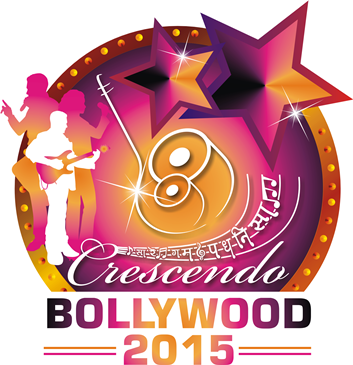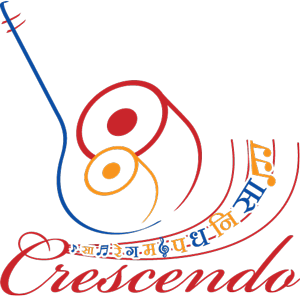Folk Music of India - by Chaitanya Kunte
What is folk music?
Many musicologists and thinkers have defined folk music in various ways, such as -
- Dr. Ashok D. Ranade - The music of people, by people and for people is folk music.
- Dr. Sarojini Babar - The music of common people, peasants, farmers, village occupational, folks, masses adorned with beautifully simple melodies and rhythms, interesting poetry depicting the nature and human mind.
- Dr. Satyendra - The songs expressing the mindscape of masses are folk music.
- Dr. Kunjbihari Das - Folk music is the music away from the classes and elite etiquettes, the songs depicting the luster of rustic beauty.
- Ravindranath Tagore - The music created by masses in excitable way shaping the melodies in expressive language.
Main features of primitive music -
Dr Ashok D. Ranade in his book on ethnomusicology describes the features of primitive and folk music as following -
- In the primary phase, music was essentially diatonic or triton. Most of the primitive songs use three-four notes of female and male voice which are, in a way, consonances in first-forth or first-fifth note (Shadja-Madhyam or Shadja-Pancham Samwaad, together forming an octave later in folk music.
- Rhythm plays a role of abiding agent. Rhythms add the liveliness in songs and also encourage one to repeat or hum it for long time. Folk rhythms have a natural meter, e.g. Kehrawa (4 beats), Dadra (6 beats), Jalad Deepchandi/ Chachar (7 beats), etc.
- It involved combination of singing, dancing and playing instruments.
- Folk music responds to three cycles in nature - cycle of life and death, cycle of day and night, cycle of seasons.
- It is music for everyone, everything and every occasion! General participation is encouraged to such an extent in the process of making music that there is a near absence of audience as a separate entity.
- Sense of 'touch' is also important, e.g. holding of hands, foot-stamping, body-thumping involved in music making.
From primitive music as human beings experience the cultural growth, music changes its nature and it gets more codified and complex to the extent of 'folk music'.
- Oral tradition - Folk music has an unbroken tradition of centuries. Carrying the tradition forward by oral tradition, not in a documented or codified form is the important aspect of folk music. Documentation of literature of folk songs, music notation and audio documentation is a recent phenomenon. It is carried forward from generation to generation in simple ways of imitation of previous generation 'not with a formal education method' but by the traditional method of oral or practical education.
- The creators of folk music, that are the poets, composers and performers remain anonymous as it is basically a social group activity in which community is important than individual. In due course of presentation of the folk music, the performers change the original tunes, poetry according to their wish or necessity. So, one can find many versions of the same song present in the same area or time.
- Folk music comes with clearly formatted melodic songs. The melodic structures in folk music form a prototype of Art Music such as Raag Sangeet in India. Many of the Raags are traced to be originated from folk tunes.
- Folk music has multiple impulses for creation of the music - it might be personal or social urge as well as artistic urge.
- In folk music, instruments are pressed into service mostly to accompany singers/dancers. Even in solo playing, instruments in folk music try to emulate music designed for voices.
- Folk music emerges and circulates and lives as expression of culture specific to a community, geographical locality, and social convention. Rather than being a personal expression as in primitive music; it is not a social or collective expression even though sung by a person in solo state.
- Folk songs are linked to certain non-musical activities in a definite manner, e.g. agricultural activities such as harvesting, pounding of corn, etc. The functionality of folk music indicates association of human psyche to music and non-musical activities.
- Folk music allocates meaningful roles to language and literature by bringing song and story together. The song cycles have a great importance in the corpus of folk music.
- Many times folk tunes have no definite beginning or end - they can continue for hours, because even though the tune remains the same, the song text continues telling a different story. This element of continuity suggests the eternal value of music and the society.
- Folk music changes constantly according the change in society, living culture and new trends. The older songs are replaced by new ones quickly according to the change in life style. Newer references are involved in the song text very easily. Rhythms changes less than melodies. Fluidity is major feature of folk music.
- It basically portrays the life of common people through music with subtle and bold shades and colors. It covers a wide range of subjects such as personal feelings, rituals, nature and its nuances, etc.
- The folk melodies wander through many geographical locations by imitation. If one community has a particular melody and it has access to some other kind of music, it easily imbibes or assimilates the newly known melody in its original corpus. So, in this way folk melodies travel to many communities crossing the geographical boundaries.
Origin of folk music -
The origin of music in the primary state of man was a natural process. Human beings found the sound from nature. Listening to these natural sounds, he tried to replicate and use them for his own self-expression. Man tried to create sound from his vocal chords and other available things such as wood, stone, bones of animals, etc. After a gradual process of developing these sounds, rudimentary instruments were created. Using own vocal chords, human beings produced basic vowels and consonances, this in further several thousand years, developed as language and then man started expressing communicating with language. Music and language are the two sides of the same coin in development of human culture. But it is sure that human beings experienced music before language as he used natural sounds and his own vocal chords much before the origin of language. Here we are going to have a brief survey of music as in folk form, which played a multiple role - it symbolized the human society and culture as it was the simple way of entertainment and celebration; and also was a medium of expression to communicate his feelings and thoughts. The folksongs expressed the primal emotions of human beings with simple words and simple tunes. As the culture grew up with complicated patterns of living style, the folk music also became complicated or became formulized and codified.
India a subcontinent full of socio-cultural diversity and naturally there is coexistence of many music cultures along with many languages. So, Indian folk music as a whole reflects the rich cultural diversity. We can find the evidences of the folk music from Vedic period from the references of ritual songs during fire sacrifices, birth-marriage-death rituals, thread ceremony, etc. These songs were called as 'gatha' which means a song. These were sung as folk tunes unlike the Vedic chants (Richa/ Chhand Mantra). According to Winternitz (a German scholar on Vedic literature), these Gathas and SamvaadSukta-s (Conversational hymns) in Vedas were prototypes of later folk songs, ballads and was the root of further development of drama.
In the due course of time, one finds that folk music developed in many ways - from simple melodies to complex structures emerging Raags, simple meters to complex Taals. In the modern period, ethnomusicologists have studied and documented more than hundred folk music cultures in India from Gadhval, Rajasthan, Gujrath, Maharashtra, Southern India, Bengal and North eastern states, in various tribes and communities such as Gond, Naga, Warli, Koli, etc.



